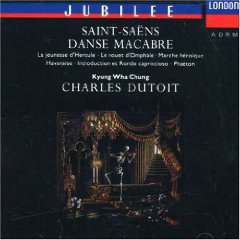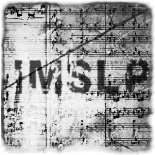The symphonic poem Phaéton (1873) by Camille Saint-Saëns is based on the ancient Greek myth with the same title. To prove to his critics that he is truly the son of Helios, Phaéton asks his father permission to drive the sun chariot for one day. Because of certain former promises, Helios has to grant Phaéton the requested permission, which he does reluctantly, because it is a major task to control the sun. Phaéton soon experiences the consequences of his youthful audacity. He is unable to hold the wild horses, carrying the sun too close to the earth. Thus, as a side note in this story, the origination of the Sahara and the skin color of the Ethiopians is explained. Finally, Zeus intervenes. The king of the gods brings Phaéton’s unfortunate ride to an end by hitting him with his lightning, causing Phaéton to crash down into the river Eridanus. His passing away is lamented by the nymphs of the river, who bury him.
It is of course interesting to examine the way Saint-Saëns used the elements of this myth to compose his symphonic poem.
After a short introduction, the strings start a rhythmic motif that clearly relates to the gallop of the horses: (mp3 – source). The trumpets burst into a theme full of bravery and splendor: (mp3 – source). After a while, frightening sounds arise and the music gets more and more restless: (mp3 – source). Then, Saint-Saëns steps back for a while. It seems like the spectators who are watching the scene lament because of the approaching disaster. A second theme appears in the horns: (mp3 – source). But soon we are back in middle of the tumultuous events, with as climax the lightning of Zeus, played by the flutes, after which the inevitable fall of Phaéton, represented by a series of descending lines, leads to his inglorious end: (mp3 – source). Again, we hear the second theme. Now it is the lament of the river nymphs: (mp3 – source). Finally, the first theme is played once more, but now all bravery and magnificence is gone: (mp3 – source).
Recommended cd’s
Details: Amazon.com
Recommended sheet music
De complete score of Phaéton can freely be downloaded from the Petrucci Library: Phaéton.



